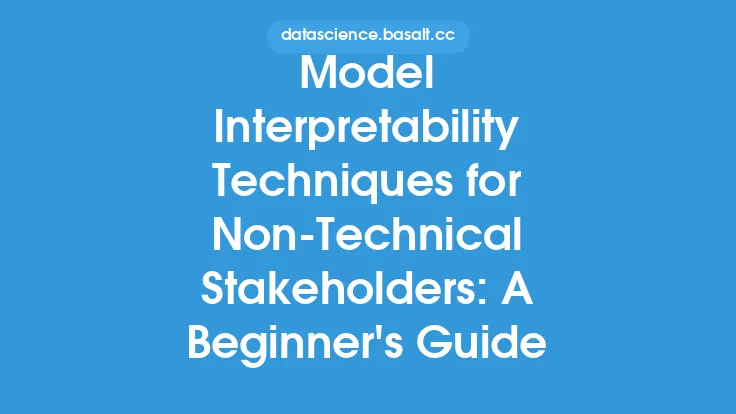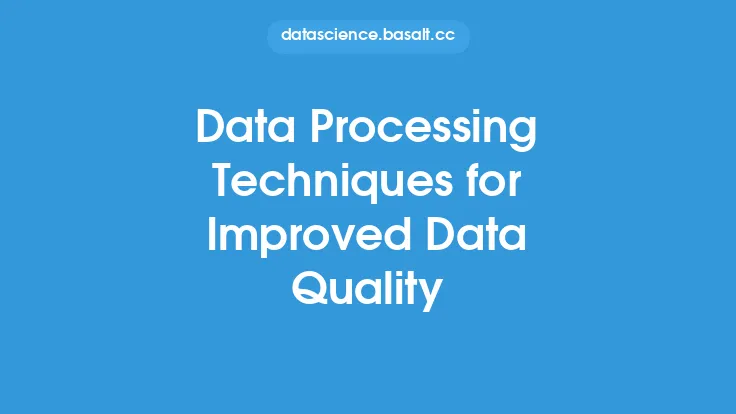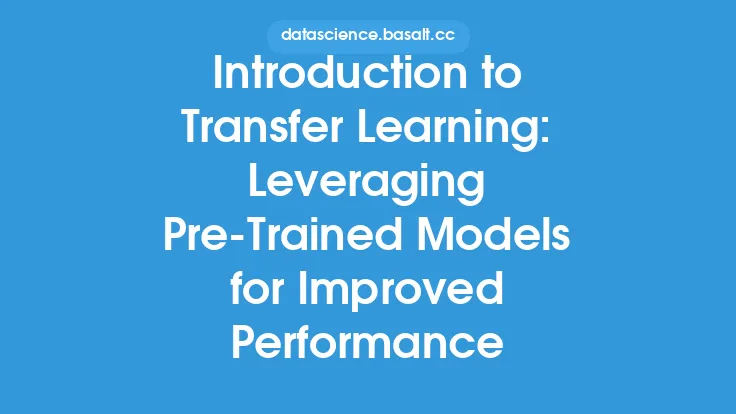Data normalization is a crucial step in the data preprocessing pipeline, and its primary goal is to transform the data into a suitable format for modeling. Normalization techniques aim to reduce the impact of dominant features, prevent feature scales from affecting model performance, and improve the overall quality of the data. In this article, we will delve into the various data normalization techniques, their applications, and the benefits they provide in improving model performance.
Introduction to Data Normalization Techniques
Data normalization techniques can be broadly categorized into two main types: feature scaling and feature normalization. Feature scaling involves transforming the data to a common scale, usually between 0 and 1, to prevent features with large ranges from dominating the model. Feature normalization, on the other hand, involves transforming the data to have a specific distribution, such as a standard normal distribution, to improve model performance. Some common data normalization techniques include min-max scaling, standardization, logarithmic transformation, and L1 and L2 normalization.
Min-Max Scaling
Min-max scaling, also known as normalization, is a widely used technique that transforms the data to a common scale, usually between 0 and 1. This is achieved by subtracting the minimum value and then dividing by the range of the data. The formula for min-max scaling is: (x - min) / (max - min), where x is the original value, min is the minimum value, and max is the maximum value. Min-max scaling is useful when the data has a fixed range and is sensitive to the scale of the features.
Standardization
Standardization, also known as z-scoring, is a technique that transforms the data to have a mean of 0 and a standard deviation of 1. This is achieved by subtracting the mean and then dividing by the standard deviation. The formula for standardization is: (x - μ) / σ, where x is the original value, μ is the mean, and σ is the standard deviation. Standardization is useful when the data has a Gaussian distribution and is sensitive to the scale of the features.
Logarithmic Transformation
Logarithmic transformation is a technique that transforms the data to have a more normal distribution. This is achieved by taking the logarithm of the original value. The formula for logarithmic transformation is: log(x), where x is the original value. Logarithmic transformation is useful when the data has a skewed distribution and is sensitive to the scale of the features.
L1 and L2 Normalization
L1 and L2 normalization are techniques that transform the data to have a specific norm. L1 normalization, also known as taxicab normalization, transforms the data to have a norm of 1, while L2 normalization, also known as Euclidean normalization, transforms the data to have a norm of 2. The formulas for L1 and L2 normalization are: ||x||1 = ∑|xi| and ||x||2 = √∑xi^2, where x is the original value and xi is the ith component of x. L1 and L2 normalization are useful when the data has a high dimensionality and is sensitive to the scale of the features.
Choosing the Right Normalization Technique
Choosing the right normalization technique depends on the specific problem and the characteristics of the data. Min-max scaling is useful when the data has a fixed range, while standardization is useful when the data has a Gaussian distribution. Logarithmic transformation is useful when the data has a skewed distribution, while L1 and L2 normalization are useful when the data has a high dimensionality. It is essential to understand the strengths and weaknesses of each normalization technique and to choose the one that best suits the specific problem.
Implementing Data Normalization
Implementing data normalization involves several steps, including data cleaning, feature selection, and normalization. Data cleaning involves removing missing and duplicate values, while feature selection involves selecting the most relevant features. Normalization involves transforming the data using one of the techniques mentioned above. It is essential to implement data normalization carefully and to monitor the performance of the model to ensure that the normalization technique is effective.
Benefits of Data Normalization
Data normalization provides several benefits, including improved model performance, reduced risk of overfitting, and improved interpretability. Normalization techniques can reduce the impact of dominant features, prevent feature scales from affecting model performance, and improve the overall quality of the data. Additionally, normalization techniques can improve the robustness of the model to outliers and noisy data.
Common Challenges and Limitations
Data normalization is not without its challenges and limitations. One common challenge is choosing the right normalization technique, as different techniques can have different effects on the data. Another challenge is handling missing and outlier values, as these can affect the performance of the model. Additionally, normalization techniques can be sensitive to the scale of the features, and it is essential to monitor the performance of the model to ensure that the normalization technique is effective.
Best Practices for Data Normalization
Best practices for data normalization involve understanding the characteristics of the data, choosing the right normalization technique, and implementing normalization carefully. It is essential to monitor the performance of the model and to adjust the normalization technique as needed. Additionally, it is essential to handle missing and outlier values carefully and to ensure that the normalization technique is effective. By following these best practices, data scientists can improve the performance of their models and ensure that their data is of high quality.
Conclusion
Data normalization is a crucial step in the data preprocessing pipeline, and its primary goal is to transform the data into a suitable format for modeling. By understanding the various data normalization techniques, their applications, and the benefits they provide, data scientists can improve the performance of their models and ensure that their data is of high quality. Whether it is min-max scaling, standardization, logarithmic transformation, or L1 and L2 normalization, each technique has its strengths and weaknesses, and it is essential to choose the one that best suits the specific problem. By implementing data normalization carefully and monitoring the performance of the model, data scientists can improve the overall quality of their data and ensure that their models are robust and accurate.





